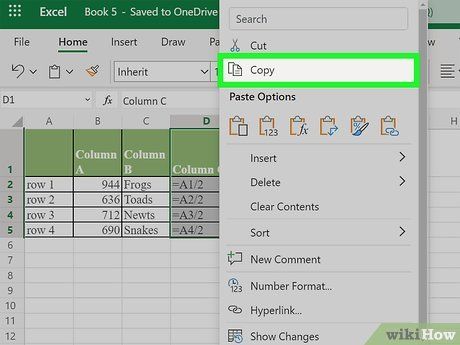3 Simple Steps to Copy Excel Formulas Between Sheets

Transferring Excel formulas between sheets can significantly boost productivity by automating repetitive tasks, ensuring consistency, and reducing errors. Whether you are merging data, standardizing reports, or simply organizing your spreadsheet activities, the ability to copy formulas between different sheets is a fundamental skill every Excel user should master. Here's how you can do this in three straightforward steps.
Step 1: Understand Your Formula

Before you begin copying formulas, understanding the formula you wish to transfer is key. A formula like =SUM(A1:A5) or =VLOOKUP(B2,Sheet1!A1:C20,2,FALSE) works within a specific context of cell references and sheets. Knowing the structure and the references ensures that you can adjust for changes in the destination sheet.
- Range References: Pay attention to cell or range references (e.g., A1 or A1:A5) as they might need to be adjusted when copied.
- Sheet References: Formulas with sheet names will need updating if the formula moves to another sheet.
- Relative vs. Absolute References: Excel distinguishes between cell references that change based on the formula’s location (relative) and those that don’t (absolute). Recognize and adjust these accordingly.
💡 Note: Use F4 to toggle between relative, absolute, and mixed references before copying or adjust manually after pasting.
Step 2: Copy and Paste with Adjustments

Copying and pasting formulas in Excel isn’t just about dragging and dropping. Here’s how to do it:
- Copy the Formula: Click in the cell containing the formula, press Ctrl+C or right-click and select Copy.
- Navigate to the Destination Sheet: Click on the sheet tab where you want the formula to be copied.
- Paste with Options: Right-click where you want to place the formula, and from the context menu, choose Paste Special. In the paste special dialog:
- Select Formulas to only paste the formula without formatting or values.
- Adjust the references if they are not as intended after pasting.
Step 3: Verify and Adjust

After pasting, it’s crucial to verify the formula’s accuracy:
- Check References: Ensure that all references point to the correct cells or ranges on the new sheet. Use the Formula Auditing tool to trace precedents or dependents if needed.
- Test the Formula: Input sample data or check existing data to confirm the formula behaves as expected.
- Adjust Absolute/Relative References: Change references if necessary to match the new context of the destination sheet.
Remember, practice makes perfect. With each copy-paste operation, you'll become more adept at recognizing when adjustments are required. Efficiently copying formulas across sheets not only saves time but also enhances the accuracy of your spreadsheets, reducing potential errors and streamlining your workflow.
In summary, transferring Excel formulas between sheets involves understanding the formula, copying and pasting with careful adjustments, and then verifying and making necessary tweaks. This process can greatly enhance your Excel productivity, allowing you to work smarter, not harder, and maintain the integrity of your data across multiple sheets.
What if the references in my formula are incorrect after copying?

+
After copying, open the formula editor by pressing F2 on the cell with the formula. Adjust the references manually or use Excel’s Formula Auditing tools to trace references and make corrections.
Can I copy formulas between different Excel files?

+
Yes, you can copy formulas between different Excel files by using the same paste special method. However, make sure to update external references in your formula to point to the correct file if needed.
How do I handle sheet names with spaces or special characters?

+
When copying formulas that reference sheets with spaces or special characters, use single quotes around the sheet name in your formula (e.g., ‘Sheet Name With Spaces!A1’). Ensure the syntax is correct in the destination formula.



